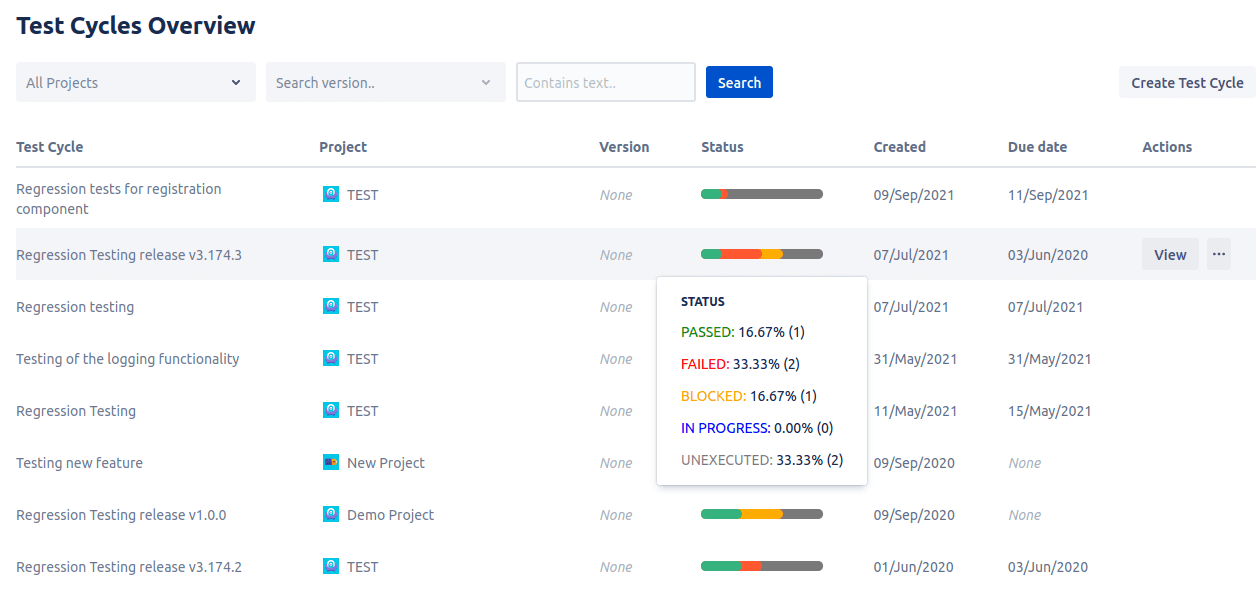Efficiency is all about balance between the time that we have and the progress that we make. Saving time means not only saving money, but also protecting this precious currency of minutes, hours and days, so that nothing, not even a single second goes to waste. But how to do that? How to keep the balance when there are so many tasks that require long hours of work, but bring not much progress? Especially in test management there is a risk of using up an unnecessarily big amount of time on things that could have been done quickly.
To fix this problem it is necessary to acknowledge the importance of proper tools. They serve as a solid foundation of every project and help to keep everything in place. Of course, professional test management tools are not cheap. However, using Excel spreadsheets is not cheap, either. It costs time. And time is a thing of great value.
Are you curious how much time can be saved while using a proper test management tool? You don’t have to test it on your own. We have analyzed the data we have and consulted our testers. Read this article to find out what we learned.
Styling and formatting
Spreadsheets are a perfect tool when you want to create a shift schedule or data analysis. They are flexible and can serve many purposes. However, when it comes to test management, it is not the best match. Creating clear and functional tables for test cases can sometimes mean hours of styling and formatting. And even with so much effort, it is not guaranteed that the table will be readable to other team members because its structure and appearance are based on the subjective preferences of the author.
About 20% of the tester’s time on a test case can be consumed by styling and formatting a table to make it readable during test execution.
This time does not have to go to waste. It can be saved and spent on more productive tasks. It takes seconds to customize a test case in a professional test management tool. Additionally, you can easily clone and reorder test steps, without worrying about disrupting the styling and formatting.
Given that the average organization creates around 25 test cases, and creating each test case lasts around 2 hours, with test management tools you can save up to 10 hours at the very beginning of the process. If you maintain a higher number of test cases, the saved time will be even greater than that.

Quick and transparent teamwork
Effective teamwork requires open-mindedness, communication and eagerness to improve. But even when all of the above factors are present, collaboration may still be difficult. One of the possible reasons for this problem is the lack of a proper tool that would facilitate information and data flow between the team members.
Using an Excel spreadsheet to plan a test cycle usually takes 4 hours more based on feedback from our testers.
Testers have to switch multiple times between programs to read requirements, upload their test scheme and exchange opinions. What seems to be a trivial inconvenience, eventually piles up and causes inefficiency. Furthermore, creating many versions of a file by different team members leads to a risk of lowered data accuracy and more unnoticed errors.
The wrong tool affects not only the time that it takes to finish the task, but also the level of concentration. It is much more difficult to focus when you have to constantly switch between files and pages. And if there is no concentration, there are mistakes.
On the other hand, using a professional test management tool will save a lot of time and provide the team with a more clear view of the progress. The more transparent each task and each action is, the more smooth and seamless the work becomes.
Hunting for bugs
Conducting tests is like hunting for bugs. Undoubtedly, such hunting requires a lot of time and patience. Our testers usually detect from 2 to 10 bugs during a single test cycle. Some of them are new. Others have already happened in the past test cycles. They have their history that can be much of a help in solving an issue that reoccurs.
Analyzing the history of a bug is a crucial part of the process. If using spreadsheets, the tester has to manually search for the past entries of every bug that he finds. It’s a lot of wearisome and time-consuming work. To get an answer they might need to search through their memories, Jira issues, build a JQL search or even involve more team members to find a previously reported bug. It’s like a wild-goose chase. A nightmare!
Is it worth this amount of time and this level of involvement? Especially when there are professional tools that can handle the task in a matter of seconds? We bet you already know the answer.
All of that effort can be reduced to a simple glance over test execution history. With the help of test management tools like, for example, QAlity Plus you can save up to 2 hours per test cycle, just on searching for the history of the bug. Another 2 hours can be saved by preventing distractions connected with creating new bugs outside of the testing context. The estimations assume that there are 10 bugs to investigate and then report.
Moreover, you can easily find every piece of information ever associated with the bug. When and where was it first discovered? Was it solved or not? How many times did it reoccur? Having all that information automatically gathered in one place not only helps to save time but also increases the clarity and transparency of the whole test. Tools designed especially for test management are also very flexible. They often allow you to link existing bugs and create new ones directly from the test execution page. It makes the whole process quicker and less distracting.

Easily accessible reports
Reports are an important part of every project. They allow us to see the results of our work and to come to conclusions that can help us improve.
Gathering data manually and creating a comprehensive report in a traditional way can take from 2 to 8 hours. It means that if reports were created automatically, we would use this time on other tasks that require our attention.
Test management tools provide us with automatic reports from test cycles. Additionally, there are often such features as filtering a report by the user that executed the test and by execution results, sorting the results in a form of a diagram or highlighting all of the open and closed bugs associated with the test cycle.
The program will gather all of the crucial data for us and it will take seconds. Unlike a traditional report that takes time to make, automatic reports can be viewed and analyzed during every part of the process, whenever they are needed.
The value of your time
They say that time is money. And if so, it is better to invest our time the best way possible, just like we do with our money. It might seem an unnecessary expense to buy professional test management software if there are so many cheaper options available. If that aligns with your way of thinking, please ask yourself a simple question: Are these cheap tools worth my time?
By using professional software you can regularly save many hours spent on unproductive tasks. And these hours will not go to waste. They will be transformed into efficiency, productivity and quality.
Therefore, we encourage you to try and discover the value of your time with professional tools that can make your working process faster and more pleasant. You can start with QAlity Plus or its free version QAlity.















